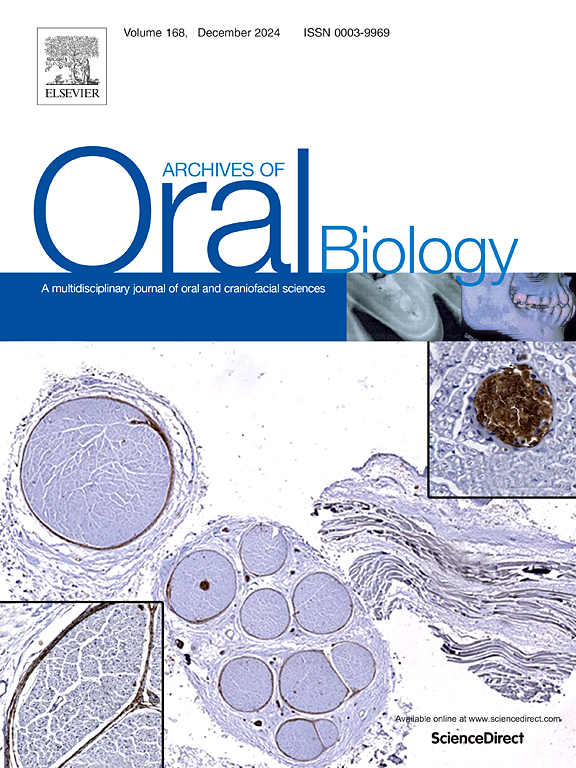Extracellular polysaccharide-rich biofilm reduces chlorhexidine effect on enamel demineralization: An in situ study
IF 2.2
4区 医学
Q2 DENTISTRY, ORAL SURGERY & MEDICINE
引用次数: 0
Abstract
Objectives
This study investigated the effect of chlorhexidine (CHX) on demineralization, cell viability and matrix composition in EPS-rich (EPS+) and poor (EPS-) oral biofilms.
Design
A split-mouth and crossover in situ study was conducted with six participants over two phases of 14 days each. During a lead-in step, biofilms were formed under either sucrose exposure (EPS+) or glucose + fructose exposure (EPS-). In the experimental step, participants rinsed with either 0.9 % NaCl (negative control) or 0.12 % CHX for seven days.
Results
Data showed that EPS+ biofilms exhibited higher enamel surface hardness loss (%SHL), lesion area (∆S) and concentrations of soluble and insoluble EPS, compared to EPS- biofilms. After treatments, CHX significantly reduced the counts of colony-forming units (CFU) in both EPS- and EPS+ biofilms. However, CHX only reduced ∆S within the EPS- group. There was no significant difference in demineralization change (%∆S) among treatments. Additionally, CHX decreased soluble and insoluble EPS concentrations in the EPS+ group.
Conclusion
While CHX effectively reduced bacterial counts, its antimicrobial effect may not be enough to reduce the enamel demineralization caused by mature EPS-rich biofilms.
求助全文
约1分钟内获得全文
求助全文
来源期刊

Archives of oral biology
医学-牙科与口腔外科
CiteScore
5.10
自引率
3.30%
发文量
177
审稿时长
26 days
期刊介绍:
Archives of Oral Biology is an international journal which aims to publish papers of the highest scientific quality in the oral and craniofacial sciences. The journal is particularly interested in research which advances knowledge in the mechanisms of craniofacial development and disease, including:
Cell and molecular biology
Molecular genetics
Immunology
Pathogenesis
Cellular microbiology
Embryology
Syndromology
Forensic dentistry
 求助内容:
求助内容: 应助结果提醒方式:
应助结果提醒方式:


